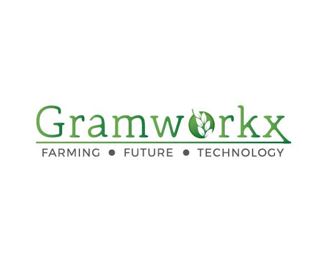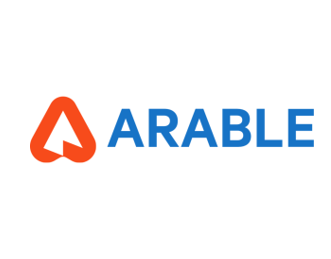123Fab #30
1 topic, 2 key figures, 3 startups to draw inspiration from

This month, the South African AgriTech startup Aerobotics raised $137M Series B for its precision agriculture platform. Using a combination of satellite imagery, drones and AI-based analytics, the startup helps farmers monitor their crops, reduce their carbon footprint and increase their overall crop yield. This funding round is just one example of the rise of precision agriculture as a promising answer to the global food crisis. Indeed, the AgriFood Tech Investment Review report indicates that investment in digital technologies accounted for 41% of the deal activity in 2019.
Precision agriculture can be defined as an approach to farm management that uses information technology (IT) to ensure that crops and soils receive exactly what they need for optimum health and productivity. The data used in precision agriculture can be collected 2 ways:
- Aerial imagery – drones, planes and satellites help to create bird-eye views of the cultivated area, which can be used to analyze a number of parameters such as the amount of water in the soil or the health and maturity of a crop. Normalized Difference Vegetation Index (NDVI) imagery is a method of measuring crop health based on the greenness of a plant.
- Soil sensors – these are used to measure the most essential parameters and chemical properties of the soil. They can be electromagnetic, electrochemical, mechanical, etc. Electrochemical sensors provide information on nutrient availability and pH in the soil, allowing crop stress and diseases to be detected 3-4 weeks in advance.
Multiple technologies have been developed in recent years for different applications: farm planning, field mapping, soil sampling, tractor guidance, crop scouting, yield mapping, etc. By moving from homogenous to individual processing, these technologies have impacted the entire agricultural value chain – from input supply to the end customer – and improved crop yields while achieving sustainability goals (limited resource use and environmental degradation). Among the technologies that have been developed, 5 main ones can be identified:
- Remote sensing technology – these technologies use remotely sensed data to measure the most essential parameters on a farm.
- Variable rate technology (VRT) systems – they use the data collected to automate the amount of input (seeds, fertilizers, pesticides, water) applicable within defined farming areas. These technologies can be used for seeding crop fields, spraying pesticides, applying fertilizers, spreading manure, etc. Irrigation systems are the most common control systems. They allow the exact amount of water to be distributed. Startup CropX has developed an analytics software that integrates with irrigation systems to help increase crop yields.
- Satellite positioning systems – global positioning systems (GPS) enable to calculate precise locations and positions. These systems are used for navigation but also for geo-referencing information. For instance, farmers use GPS to collect geo-referenced soil samples to check nutrients, pH levels and other data to make profitable decisions.
- Equipment guidance and automated steering systems – they automate farmers’ slow, repetitive and tedious tasks, such as harvesting crops or blowing seeds. Autonomous machines are slowly appearing in the industry, using computer vision to distribute fertilizers accurately – studies show that fertilizer use can be reduced by up to 80%.
- Geo-mapping – it is a technology used to create maps of various soil and crop conditions.
In recent years, large agricultural players have joined forces with startups to shape the future of the agricultural industry. ADAMA, one of the world’s leading crop protection companies, recently announced a partnership with startup Taranis, to develop an end-to-end precision agriculture solution.
Although precision agriculture is a golden opportunity for global food security and crop yields, some challenges still need to be addressed. One of the first obstacles to its adoption is the high investment costs. Another is that most solutions have been designed for large, homogenous farms and are therefore not suitable for small, diversified farms. In addition, as precision agriculture has only recently taken off, there is still is a lack of experience in the use of drones, robots, and other precision agriculture tools, as well as a lack of connectivity between all the different devices and software (but should fame over time). Last but not least, the complexity of managing data privacy and cybersecurity is problematic (most of the cyber threats faced by precision agriculture are consistent with those in other connected industries: data theft, theft of resources, reputation loss, destruction of equipment, or gaining an improper financial advantage over a competitor).
To conclude, precision agriculture is undergoing a rapid transformation. The use of GPS guidance, aerial mapping, robotics, and drones is pushing towards sustainable agricultural practices that can have a positive impact on social, environmental, and economic aspects, but it remains a challenging opportunity. While not all companies will succeed in the transition, those that do will shape tomorrow’s sustainable food supply.
2 Key Figures
210 Precision agriculture startups
registered by Crunchbase
Market size expected to reach $11.1bn by 2025
The market size is expected to reach $11.1bn by 2025, rising at a CAGR of 13.9%.
3 startups to draw inspiration from
This week, we identified three startups that we can draw inspiration from: GramworkX, Karnott and Arable.

GramworkX
GramworkX has developed an IOT and AI enabled smart farm resource management tool, which helps the farmers guide, optimize and monitor utilization of water. The technology includes a unique machine learning algorithm, which provides micro-climatic condition predictions for the farmer to take accurate and proactive decisions.

Karnott
Karnott offers a tracking software coupled with a connected device that tracks agricultural equipment. Karnott places an automatic, autonomous, mobile, real-time device in tractors, trailers, or seeders to collect data, and then their software automatically calculates, analyzes, and archives it.

Arable
Arable is an agricultural data and analytics company that offers the world’s first IoT-enabled irrigation management tool, weather station, and crop monitor in one, the Arable Mark. Reliable data-driven decision-making saves customers time and money, reducing risk while preserving natural resources.
